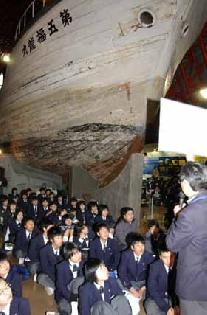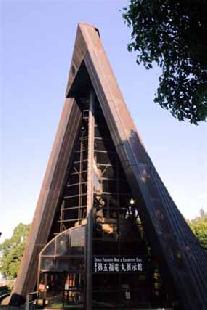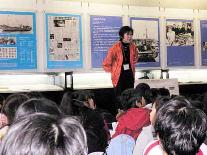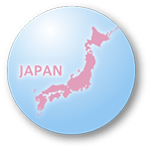JAPAN
The Tokyo Metropolitan Daigo Fukuryu Maru Exhibition Hall (Japan)
(Jan. 30, 2009)
by Kazuya Yasuda, Chief Curator
On March 1, 1954, the Daigo Fukuryu Maru (Lucky Dragon No. 5), a wooden tuna fishing boat that was active in the post-war period when food was short, was caught in a U.S. hydrogen bomb test on Bikini Atoll in the Marshall Islands in the equatorial Pacific Ocean and showered with radioactive fallout. The 23 crewmen suffered acute radioactive sickness and the chief radio operator, Aikichi Kuboyama, died six months later.
The stricken boat was taken over by the Japanese government and used as a training ship for the Tokyo University of Fisheries (now, the Tokyo University of Marine Science and Technology). It was retired in 1967 and left abandoned in the reclaimed land of the Yumenoshima coastal area in Tokyo. Later, a movement to preserve it as a “peace heritage to convey this nuclear bomb-related tragedy” spread nationwide, leading to the establishment of the Tokyo Metropolitan Daigo Fukuryu Maru Exhibition Hall.
In the museum the real 30-meter-long boat is on display along with the “ashes of death,” diaries written by the crew, and the daily items they used. Also shown are the escalation of the contaminated-tuna row, Japan-U.S. relations in the process of resolving the incident, voices of residents in the Marshall Islands who were also exposed to the bomb test, and the damage from nuclear testing in various countries. The total number of visitors has exceeded 4.5 million as of July 2008. Students of more than 450 elementary, junior high, and senior high schools and civic groups have seen the museum guided by volunteers.
Although the museum offers opportunities to learn and reflect in regard to the global state of nuclear weapons today, as well as issues of war and peace, memories of the past are fading with the passing of half a century. This is why we are conducting, under the banner of “Passing on the facts to new generations,” such activities as photos exhibitions, art exhibitions, concerts, children’s craft classes, and storytelling with children’s books about peace. Our photo exhibitions have been held in many other parts of Japan, too.
Address: Yumenoshima Park, 3-2 Yumenoshima, Koto Ward, Tokyo
Phone: +81-3-3521-8494
Homepage: http://d5f.org
Days closed: Monday (when the day falls on a national holiday, closed on the next Tuesday), December 29~January 3
Admission: Free
(Originally published on January 19, 2009)
Related articles
Exhibition on A-bomb Dome and Daigo Fukuryu Maru now being held (Oct. 16, 2008)
The hidden truth of the Bikini Incident (March 7, 2008)
Fifty-four years after the Bikini Incident: An interview with Matashichi Oishi, former crewman on the Daigo Fukuryu Maru (Feb. 28, 2008)
 Students listen to a curator in front of the displayed Daigo Fukuryu Maru. |  The exterior of the museum |  Volunteers guide students and civic groups. |
 Peace Museums of JAPAN
Peace Museums of JAPAN